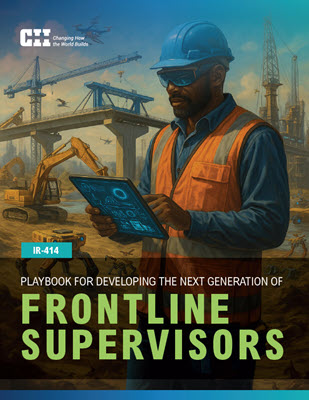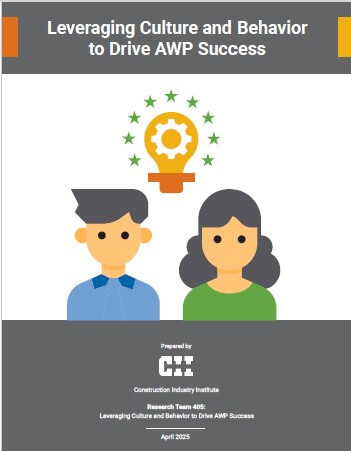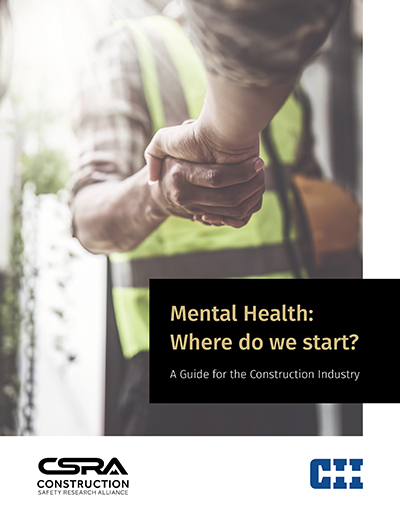
Organizational Culture in Engineering and Construction Organizations
People spend much of their time functioning within organizations. Some within engineering organizations, some in construction organizations, and some in manufacturing organizations. The specific types of organizations do not matter. What must be recognized is that all organizations exist to fulfill specific goals, which must include satisfaction of the needs of their external and internal constituencies.
If the analysis is focused on business organizations, the person responsible for the performance of the organization, or some part of it, typically has the title of manager. The job of this manager is to manage; but what is management? A long-used, very simplistic definition of management is “getting things done through people.” But what things? It is much more enlightening to think of management as a process of establishing and attaining objectives in pursuit of the organization’s goals. Typical objectives that are established for business organizations are financial or market-oriented such as return on investment, profit margin, or market share.
Attainment of these objectives is necessary but not sufficient for managerial and organizational success. There are other requirements that may, depending upon the environment of the organization, be as important. These would include the efficient use of human and nonhuman resources, conducting operations in a safe manner, nurturing and developing of human resources, understanding and satisfaction of customer needs, etc.
A key concern for any manager is getting his/her people to perform in a manner that maximizes their satisfaction and, at the same time, fosters the success of the organization. This involves having people fulfilling the basic requirements of their job in terms of showing up for work; performing the required activities of their job such as designing a building foundation, developing a computerized information system, or determining the cause of cost and schedule overruns on a construction project; and being a good organization citizen by getting along with people, doing one’s share of the work, etc. In addition, the manager needs people to expend the extra effort to do the small and large things that foster the success of the organization such as working past the normal quitting time when necessary, doing things outside of one’s job description, etc. The manager wants people to develop an identity with and a commitment to the organization. He/she would like the members of their organization proudly to tell others that they work for XYZ organization. The ideal situation is one in which the members of the organization perceive their success in satisfying their needs and desires as intertwined with the success of the organization. If the organization is successful, its members will be successful. When this situation exists, people perform at high levels.
If this issue is examined in a slightly different manner, the question of interest becomes how do we improve the performance of an individual relative to his or her potential. Do people work at 100% of their potential? The answer must be a resounding no! In the long run, no one can work at 100% of his/her potential because of mental and physical fatigue and constraints imposed by the organization such as failure to provide necessary equipment, information, and materials. Most people can work at 100% of their potential for short periods of time, but, on average, the typical person works at much less than 100% of his/her potential.
There are five basic elements of corporate culture:(SD-52, p. 5)
- The Business Environment – The success of an organization in certain business environment will depend on the organization doing things very well. What these things are will be a prime determinant of the organization’s culture.
- Values and Norms – It is very important to understand what the organization is rewarding for the person to perform satisfactory to appraisal criteria. The reward need not be always monetary, but something which is perceived of value by the members of the organization. It is also noted that mostly the behavior of manager and leaders is perceived as the model behavior for that particular organization.
- Heroes – Heroes and leaders personify the values which form the soul of the culture and strengths of the organization.
- Rites and Rituals – An organization needs rites and rituals to reinforce the values and norms. Several types of rituals have been identified as of importance to an organization:
- Commitment and social rituals – deal with social exchange process & interpersonal relationship within the organization
- Work rituals – utilized by members to perform work
- Management rituals – govern the conduct of managers
- Recognition rituals – illustrate the values and norms organization seek to uphold
- Communication – Effective communication depends on the cultural network rather than formal structure of the organization. A diverse group of members form this network and a manager must learn how to use them for proper organization communication.
The best managers are those that function within a framework of competing values. These values can be described in terms of four models: (SD-52, pp. 25-26)
- Rational Goal – preference for a high degree of certainty and for short time horizons. Focus on clarification of goals and independent action.
- Open Systems – short time horizons and a low degree of certainty. Decisions are made quickly and modified as new information is received.
- Human Relations – long time horizons and a low degree of certainty. Emphasizes human interaction and feelings.
- Internal Process (bureaucratic) – long time horizons and high degree of certainty. Information is gathered an systematically analyzed.
These models can be used to describe:
- Effectiveness
- Culture
- Leadership
- Power and Influence



